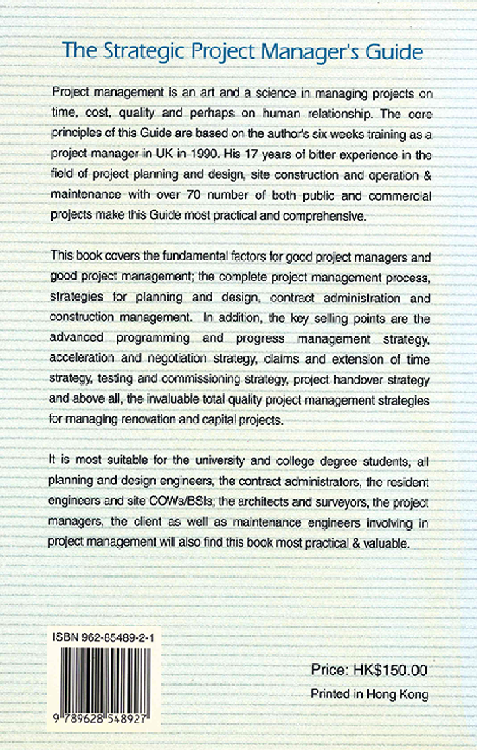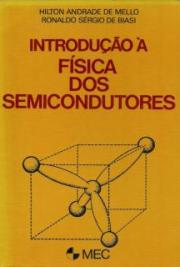21
21
Chapter 5


22
22
Chapter 5
Project Initiation Strategy
1.0 The Project Brief
2.0 The Project Execution Plan
3.0 The Feasibility Study
4.0 The Project Appraisal and Selection
1.0 The Project Brief
1.1 Location of the project
1.2 Brief title of the project
1.3 Objectives
1.4 Scope of work
a) Time
b) Cost
c) Quality
.6 Other special requirements or constraints
.7 Standards and free supply drawings
.9 Other consultants and leading designers
2.0 The Project Execution Plan
2.1 A project execution plan is a statement or an action plan of the project objectives and strategies. It is usually produced at the beginning or initial stage of a project.
2.2 It serves as a means of communication and a measuring tool for project control and performance.
.3 The project execution plan shall comprise the following:
a) The project objectives
b) The scope of work
c) The constraints
23
23
d) A cost plan
e) A programme
f) The control procedures and approvals
g) The contract strategy
h) The contingency plan
i) The commissioning proposal
j) The problem areas
k) Any major risks
l) Reporting procedures and reviews
3.0 The Feasibility Study
3.1 Whenever the buildability of a project or its value for money
in question, a feasibility study will be conducted to evaluate
the following:
a) Its feasibility
b) The possible alternatives for satisfying the requirements
c) The cost options of each alternatives
d) The time scale of each option together with is pros and cons
3.2 In carrying out a feasibility study action plan, the following
should be considered:
a) Check the brief
b) Appoint a team leader
c) Clarify the scope of the feasibility study
d) Advise the deliverables
e) Assess the impact of the study in relation to the corporate policy
f) Estimate the resources
g) Establish budget and time scale for the feasibility report
h) Agree the reporting level and format
i) Allocate responsibility and tasks
j) Carry out the study
k) Conclude with a draft report
l) Submit report for comment and amend
m) Submit final report
24
24
3.3 Contents of feasibility Study
a) Description and definition of the project
b) Reasons or objectives of the project
c) Method of the project
d) The technical assessment
- Desk top research
- Field research
- Mathematical research
e) The financial assessment
- Life cycle costing by net present value method
- Capital cost
- Services cost
- Operation cost
- Maintenance cost
- Energy cost
f) Risk analysis
g) Resources requirements
h) Alternatives / options
i) Recommendations
j) Contingencies
k) Conclusion
l) Executive summary
m) References
4.0 The Project appraisal and selection
4.1 An appraisal usually consists of the following steps
a) Define the objectives
b) Consider the potions
c) Identify the costs and benefits of each option
d) Discount those costs and benefits which can be quantified by the use of net present value method
e) Weigh up any uncertainties
f) Assess other non-financial factors
g) Draw up the conclusions and present recommendations
☞ References 6.8.9.
25
25
26
26
Thank you for your interest in The Strategic Project Manager’s Guide
Please go to Kindle / Google Play Store to unlock the full version of
The Strategic Project Manager’s Guide.
Kindle book: https://www.amazon.com/Strategic-Project-Managers-Guide-ebook/dp/B06XT275X8/ref=sr_1_1?ie=UTF8&qid=1490763714&sr=8-1&keywords=The+Strategic+Project+Manager%27s+Guide
Google Play Store: https://play.google.com/store/books/details?id=M5m8UqvVR2EC
Readers Information Feedback
1. If you have any suggestions or queries to make for this book, please fax to:26093708 or email: hkcehkice@gmail.com
2. If you would like to purchase more copies of this book, you may do so by fax to the same number 26093708. If you purchase for two books, you may enjoy a discount of 20% or the above email or call +852 26871208
Ecopy version is USD 10 or HKD 80.
Name:________________________________________________________________
Telephone: ________Pager: __________________ _______________
Fax Number: __________________________________________ _______________













